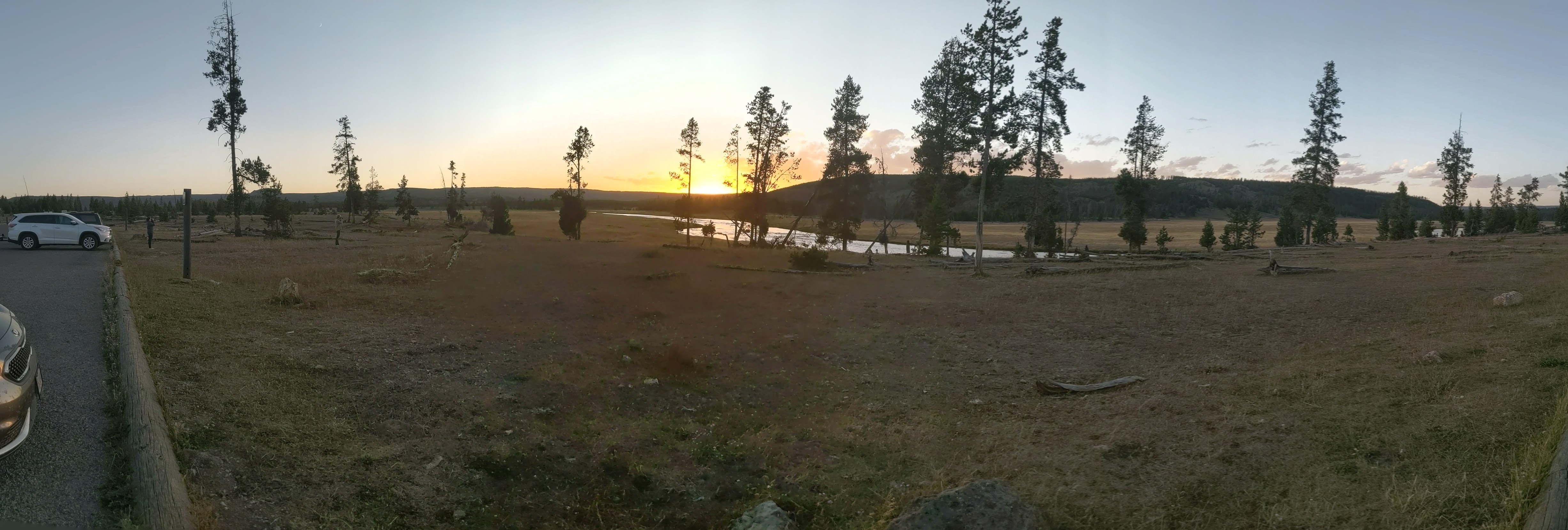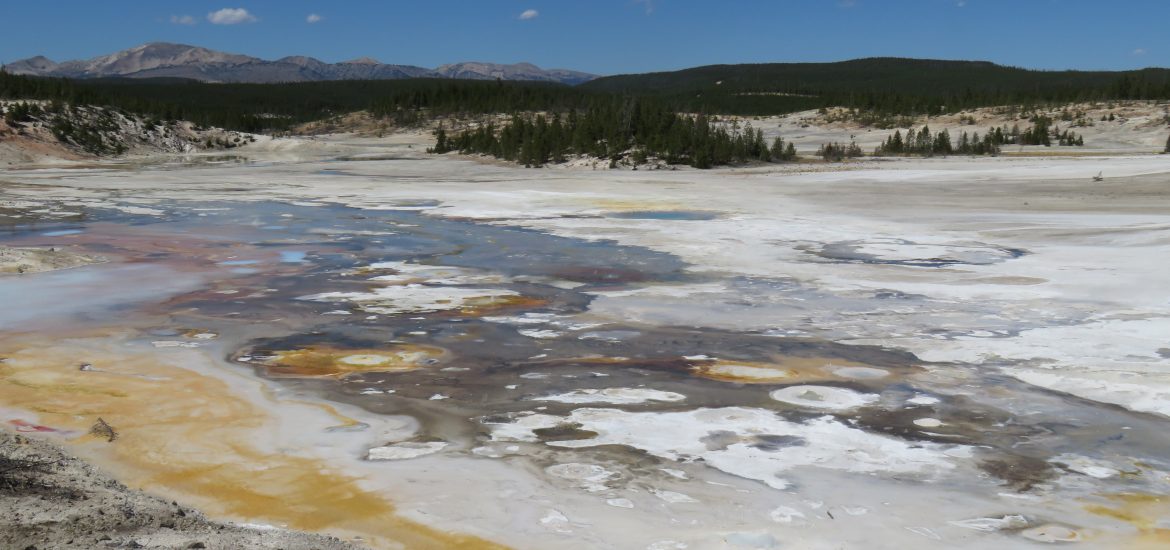The eruption of Great Fountain Geyser last night was so awesome, even though it was really dark, that we decided to see it again this morning. The eruptions are on a nearly 12-hour schedule, and since it erupted last night at 9 PM, we figured it would be possible to see it erupt again in the morning. We were not wrong, and our first drive by at 8 AM showed the pool slowly filling up. We knew from past experience that it would be easily more than an hour from this point before it erupted, so we continued on toward other features in the Lower Geyser Basin while the eruption brewed.
The area we decided to go to is the Fountain Paint Pots area, where there are geysers, springs, and mud pots in decent quantity. The namesake of this area, Fountain Paint Pots, was quite interesting, being a bunch of holes in the clay where bubbling mud was spurting at random. Though you can’t see it in this shot, we do have a movie that clearly shows bits of mud being shot into the air from several of the holes, a quite unique display.
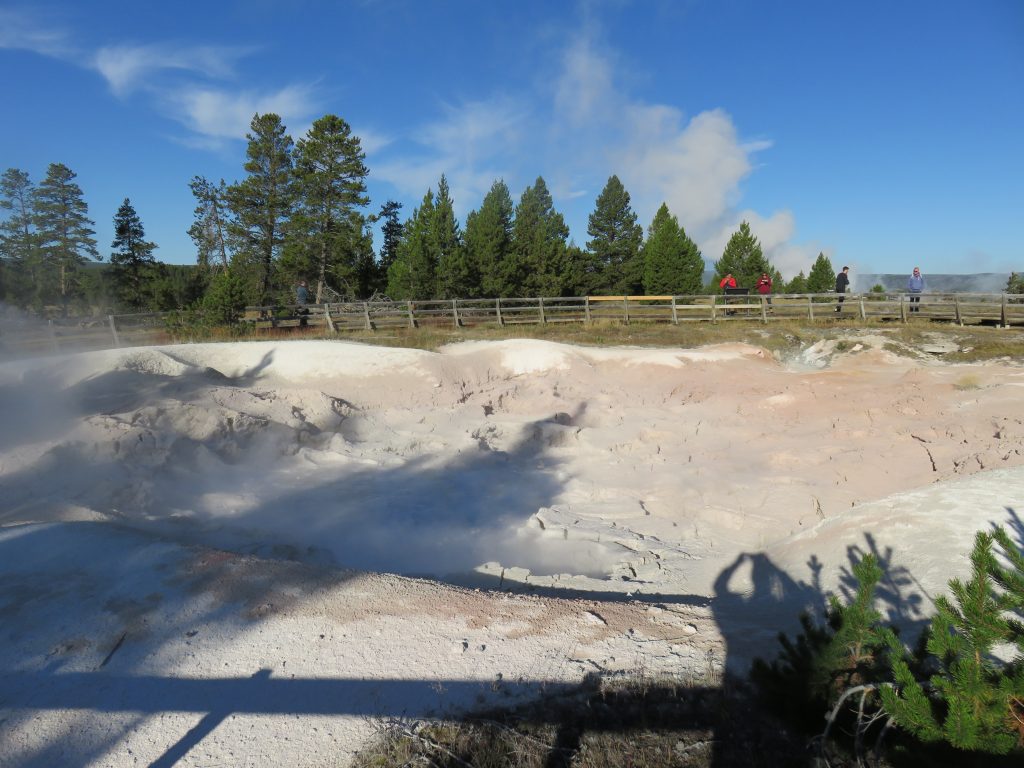
The Clepsydra Geyser was also neat because it erupts constantly and emits a decent amount of steam and water when it does.
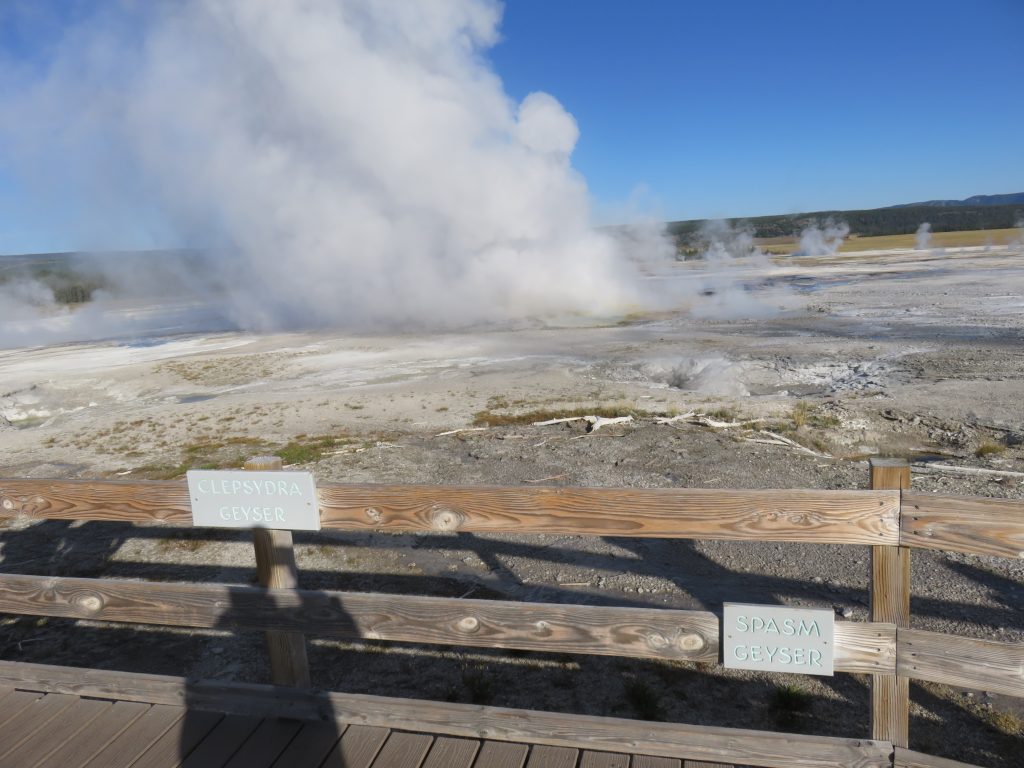
What’s more impressive than the hydrothermal features is the obvious hostility toward life in this area. The picture above shows a bit of that aspect in the background, but we have a better shot of it seen here.
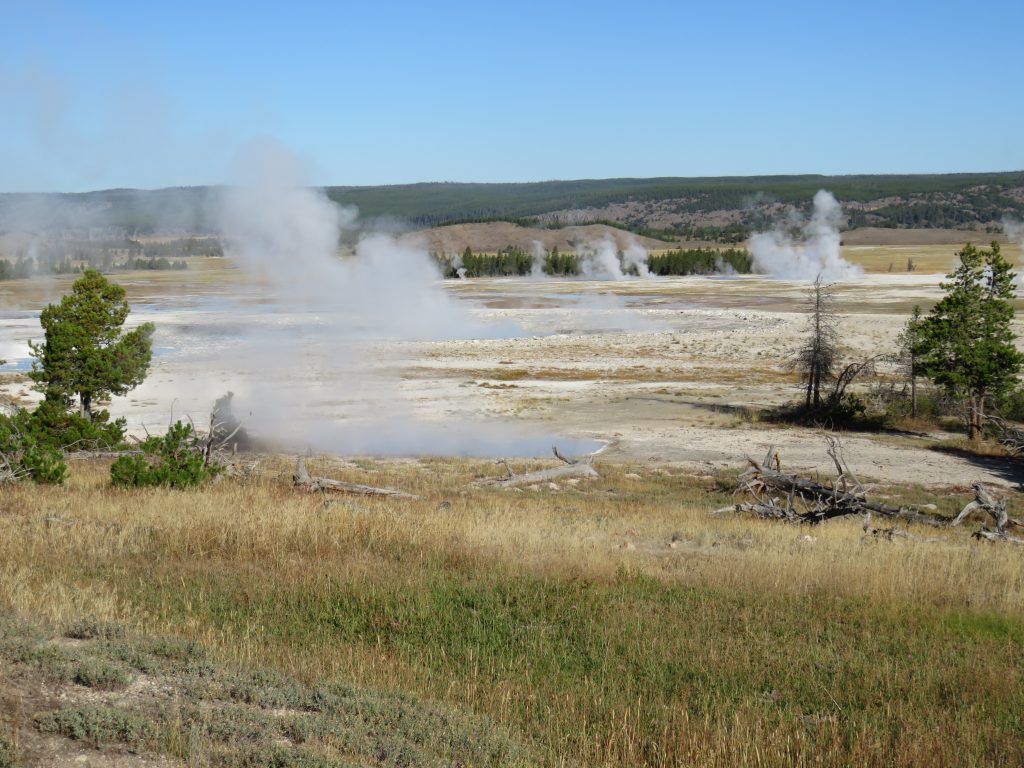
After touring the Fountain Paint Pots area, we headed back to the Great Fountain Geyser and waited for the eruption. At this point, it was probably about an hour until the eruption, but given the unreliability of predictions, we didn’t want to chance missing it. This shot of the eruption here is the clearest.
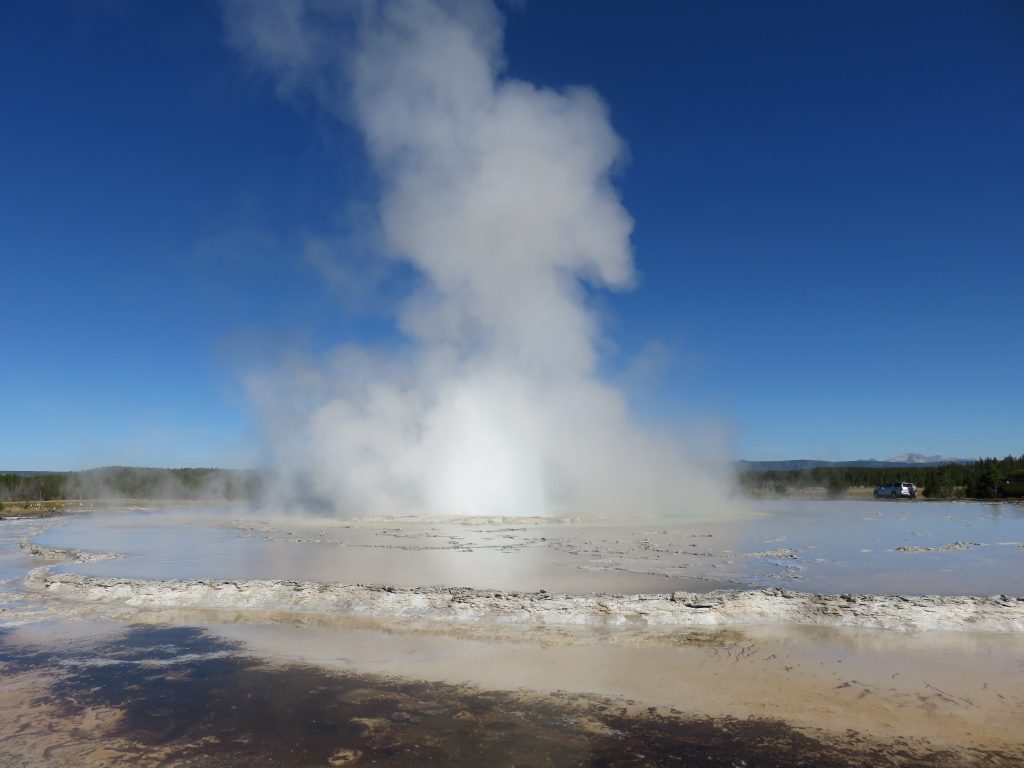
But that shot did not capture the most impressive portion of the eruption, which was similar to the eruption from the night before. There was one single blast that shot an enormous amount of water into the air and into the surrounding pool, sending a wave over the edge just like before. Given that you’ve seen the usual size of the steam cloud, here’s the steam cloud just after that huge burst.
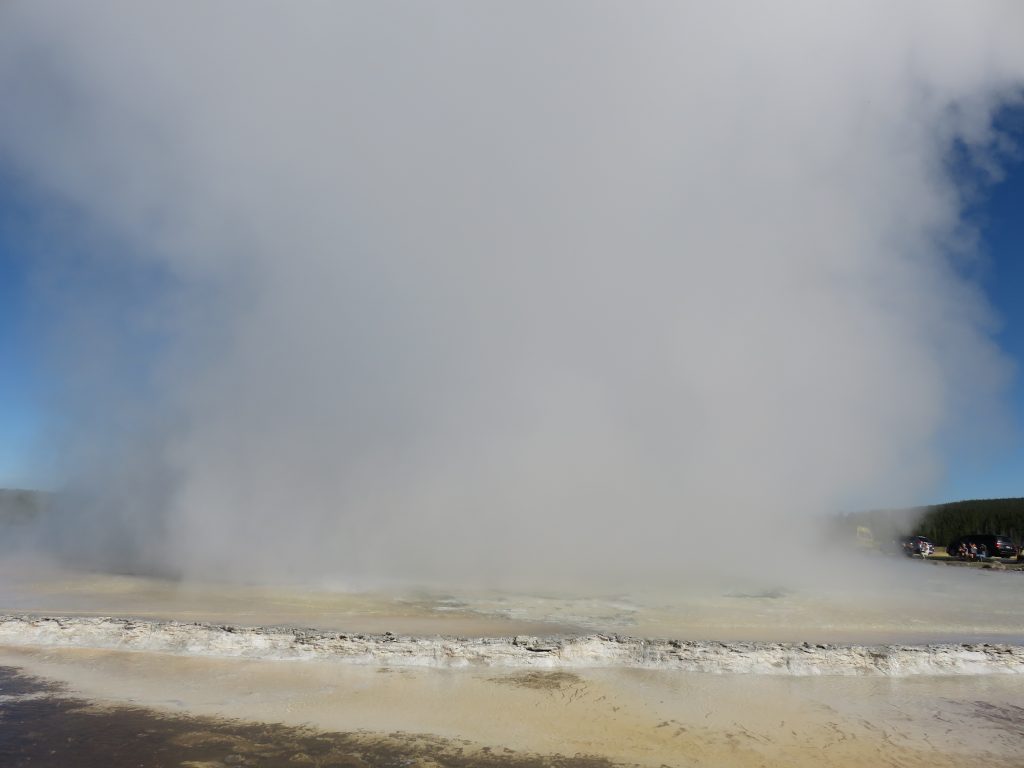
The sheer force of these bursts, the longevity, and the magnitude of the eruption makes this our favorite geyser to catch an eruption of. If you ever make it to Yellowstone, it’s highly worth it.
After the eruption of Great Fountain Geyser, we continued along the Firehole Lake Road, taking in the sights we had previously passed because it was either dark or we knew we’d be back. In the area of the road’s namesake was the Hot Lake, which provided an excellent view with a backdrop.
IMG_2836.jpg
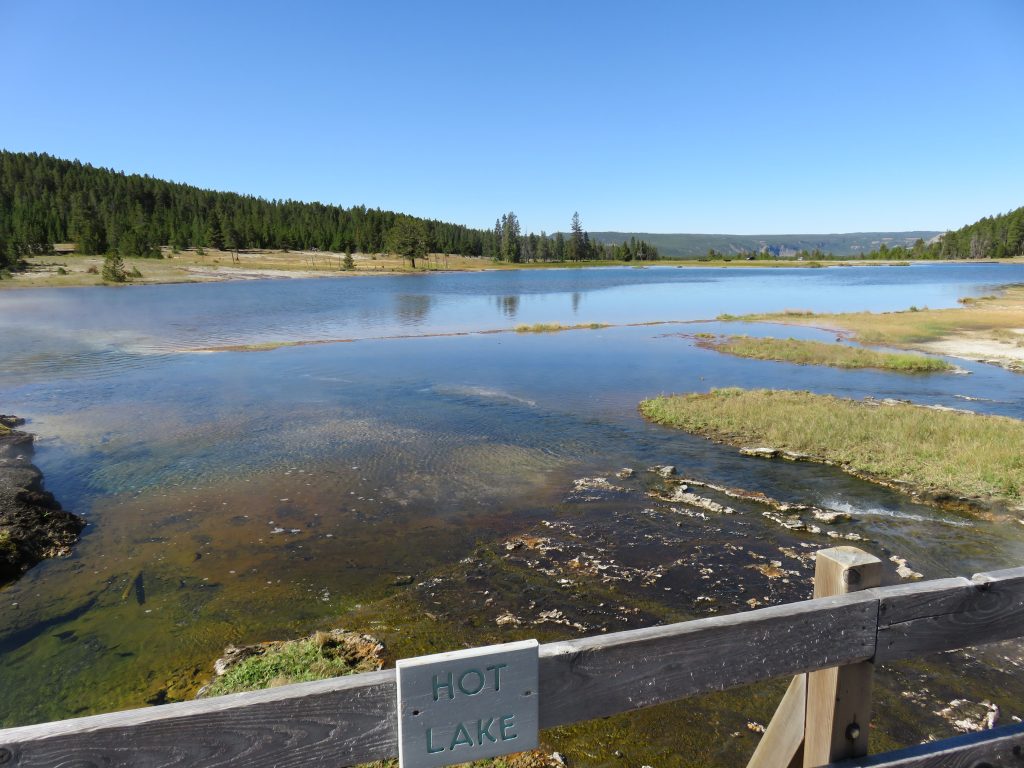
Once we got back on the main park road, we headed north to the Norris Geyser Basin, the hottest and oldest of the hydrothermal areas in the park. The first feature we came upon was the Steamboat Geyser. One trait of this area is that the hydrothermal features are all quite acidic, and this geyser being close to the parking lot results in possible damage to cars as indicated by signs in the parking lot, stating “Park at your own risk”. The geyser itself is very unpredictable though, with the time between eruptions being anywhere from 4 days to 50 years between them, but if you manage to catch a major eruption, it is the tallest in the world, some bursts reaching up to 300 feet. Given that, the best picture we got of the geyser was this.
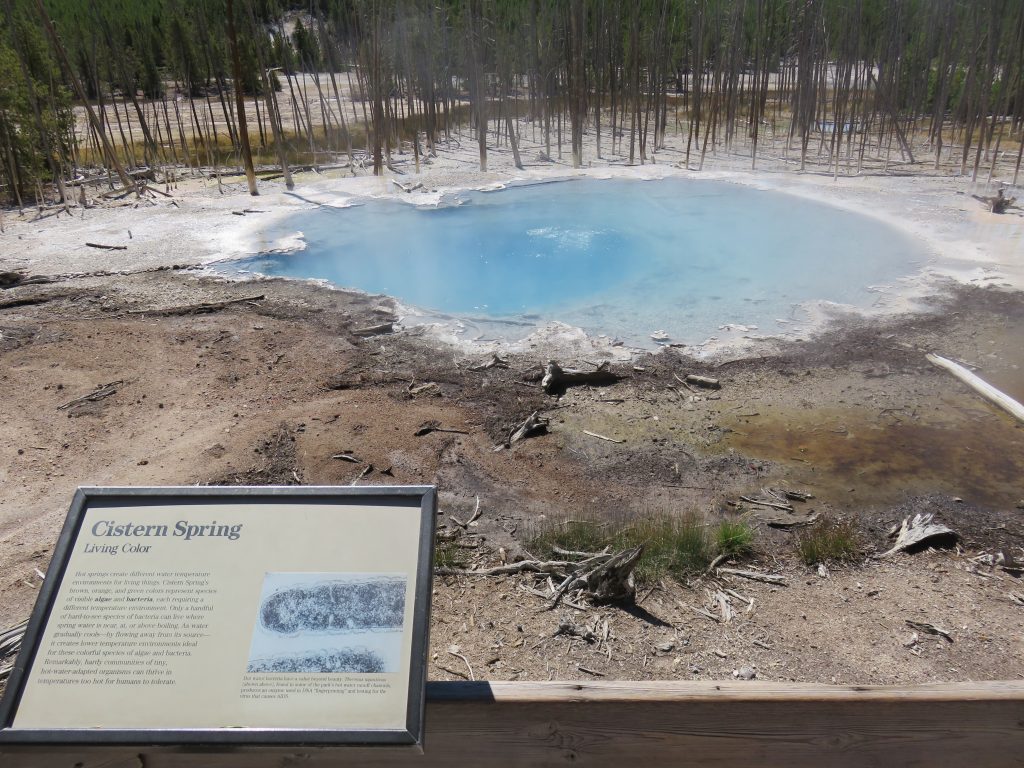
We certainly aren’t crazy enough to wait for days for an eruption, but this platform was filled with people in camp chairs waiting patiently for an eruption, stating that “I’ll wait days if I have to.” While it may be the largest erupting geyser in the world, I’m not sure that kind of wait is worth it, but more power to them.
We continued through the Norris Geyser Basin and continued to witness an environment captured nicely by the featured image in this article. This basin being the hottest creates an incredibly hostile environment and the whole area looked like a barren wasteland, save for a few clusters here and there where trees and shrubs managed to grow. Another remarkable feature of this geyser basin is the variety of color. Here’s the most acidic geyser in the world, Echinus Geyser.
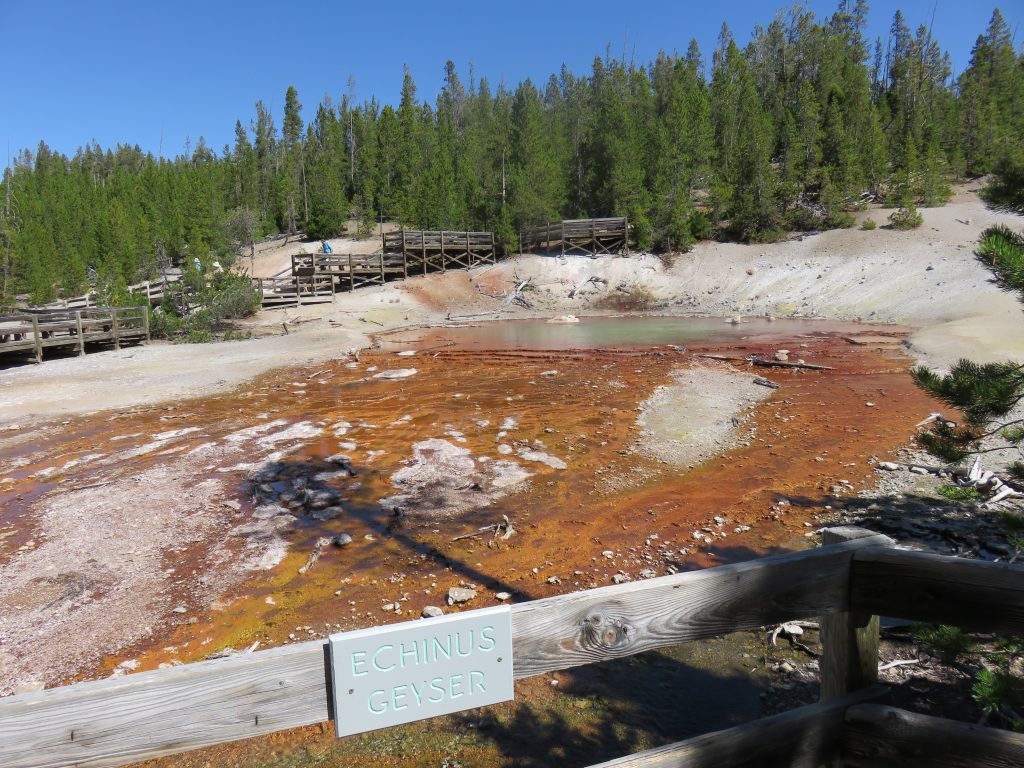
And here’s a green mat of algae and grass in amongst the features, just proving that even in this, the harshest of environments, things still manage to grow.
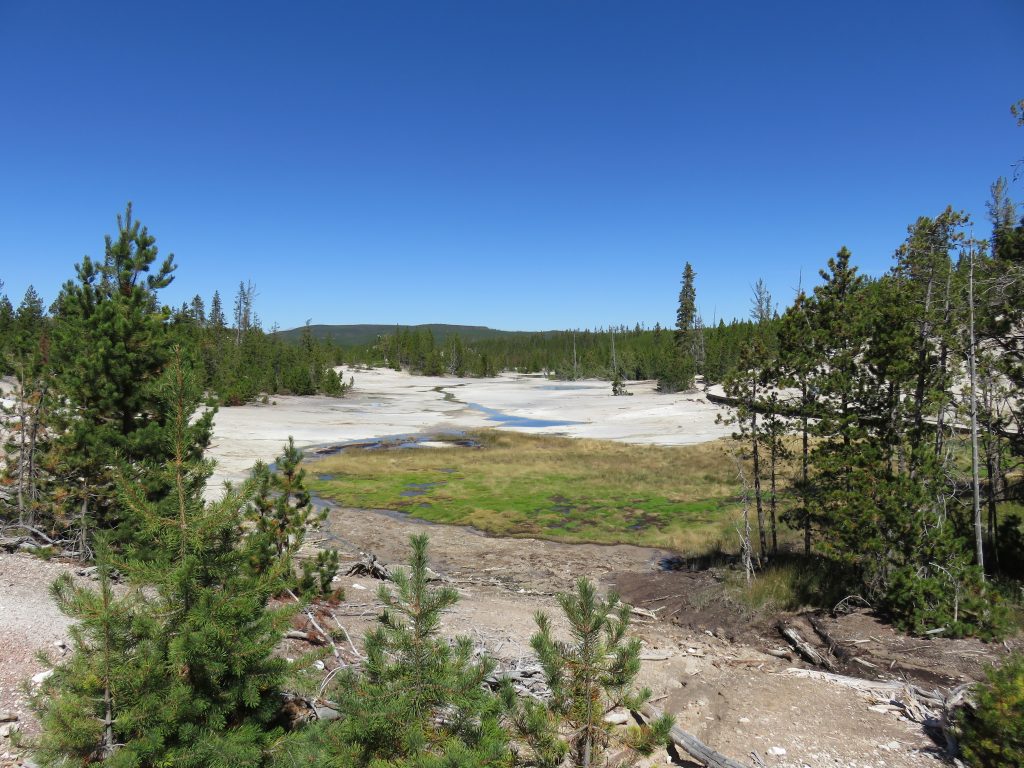
Here’s a pool with a very opaque and beautiful light blue color we have not seen anywhere else in the park.
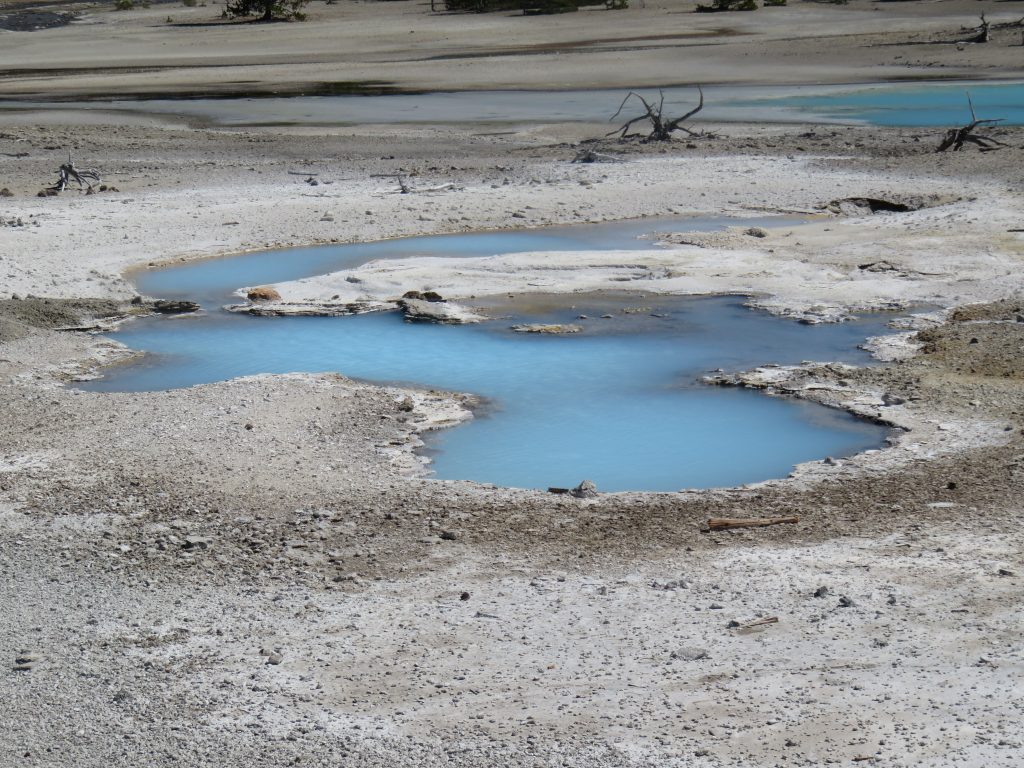
And to cover the green spectrum, here’s a pool that again has a color we have not seen anywhere else.
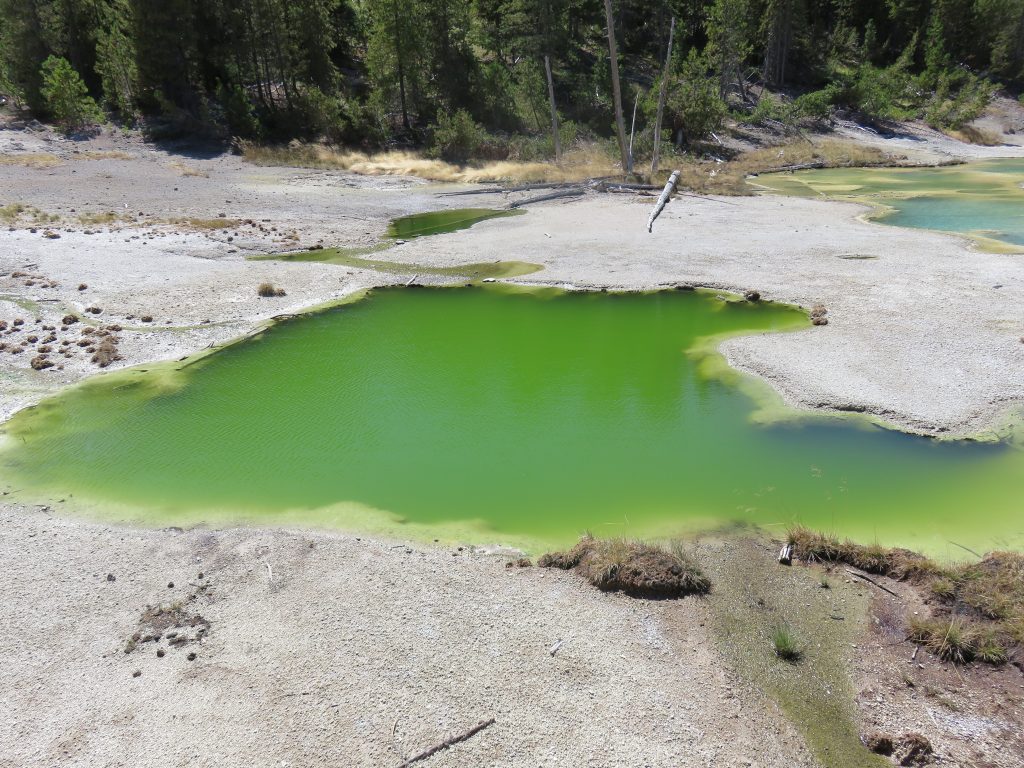
Because of the variety of colors, the expanse of wasteland, the mountains in the background, and the size of this geyser basin, we consider it to be our favorite in the park so far.
After leaving the Norris Geyser Basin, we hit some of the sites between that area and the Madison area where we were camping. One of the views we loved in particular was this overlook of a valley with some more “traditional” scenery you might find in other parks, but is still beautiful nonetheless.
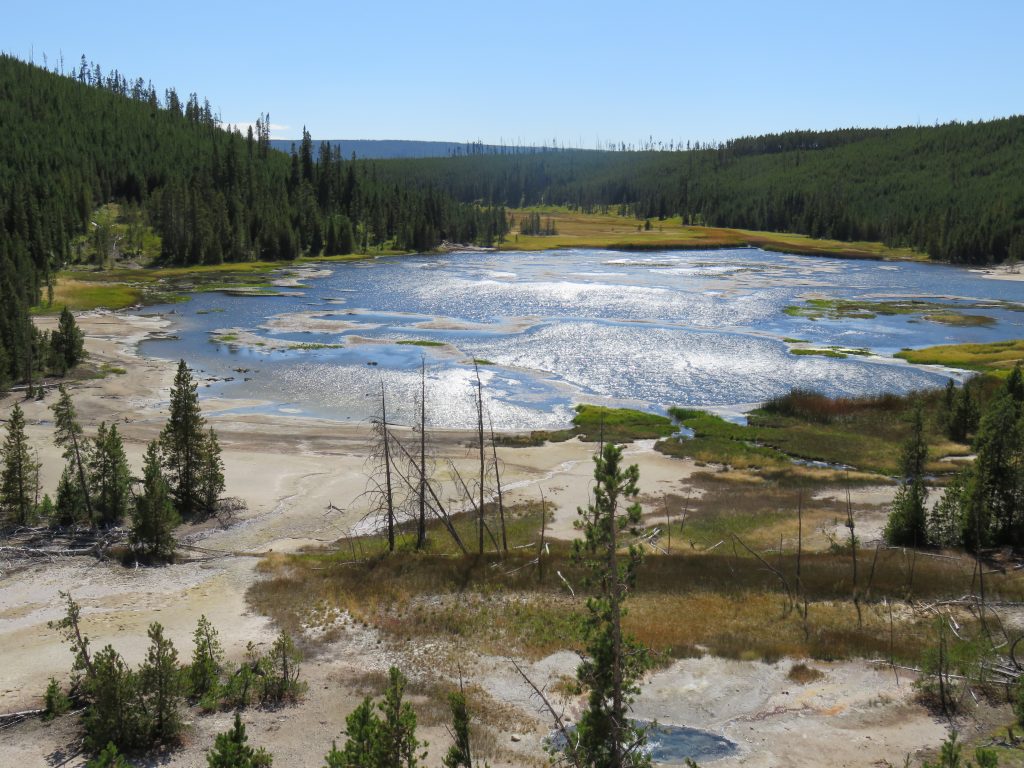
We then visited the Artist Paint Pots, which also had quite the variety of colors. It’s about a half mile or so hike out to the area, but it provides beautiful views of varying color. Here’s a view from the overlook.
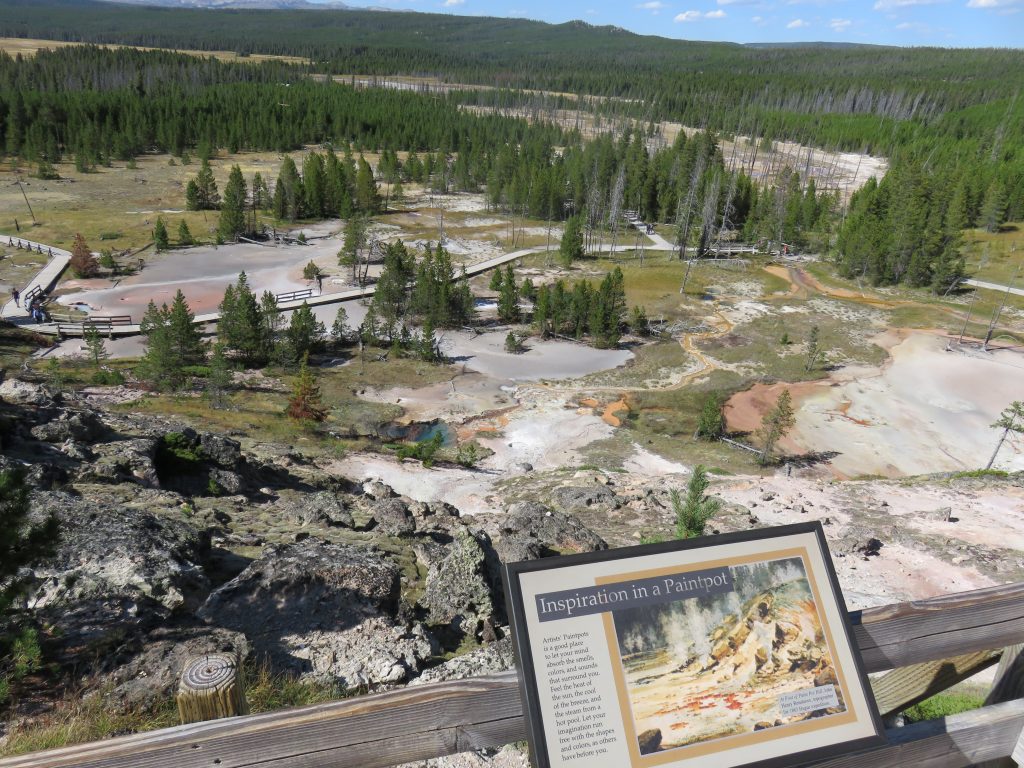
We stopped off at the Gibbon Falls, right along the highway on our way to West Yellowstone for dinner. The view was quite nice.
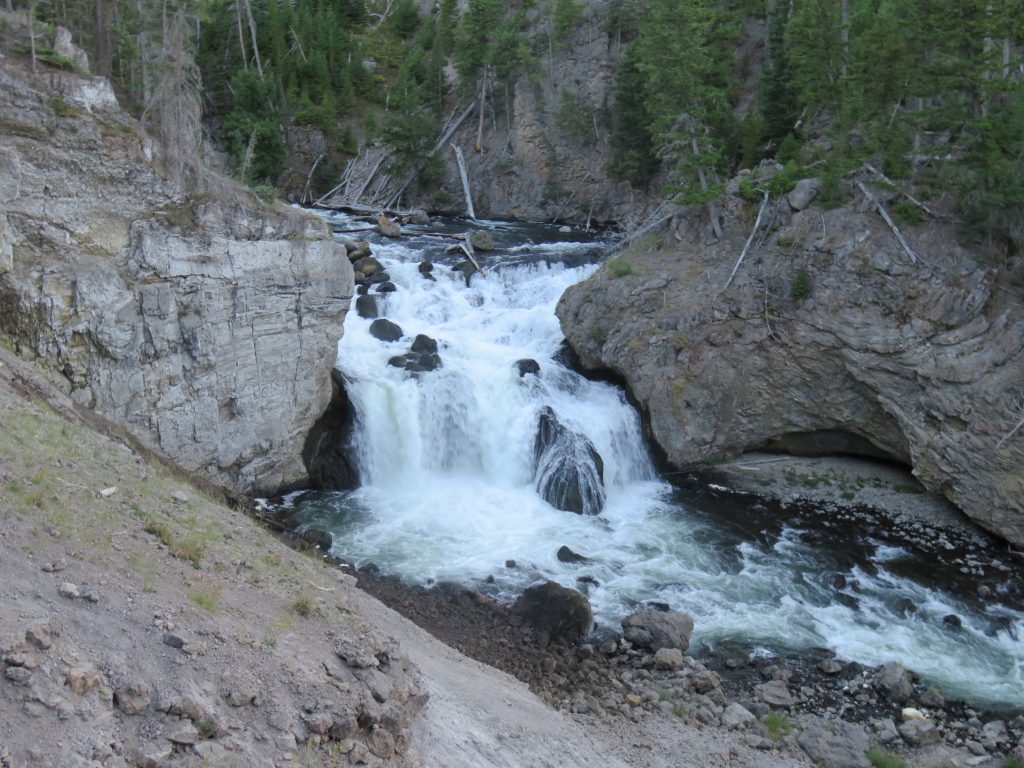
Finally, after dinner we decided to do the remaining scenic drives we hadn’t done south of the Madison area, so we did the Firehole Canyon Drive, which we didn’t get any really good pictures on, and the Fountain Flat Drive, which gave us this wonderful sunset view to finish off the night.
